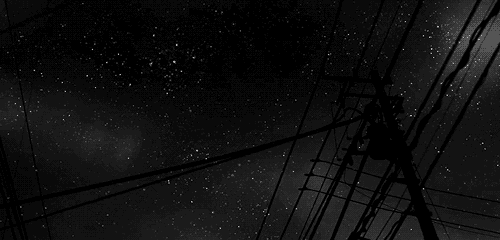Http://sevencamels.blogspot.ca/2008_12_01_archive.html



http://sevencamels.blogspot.ca/2008_12_01_archive.html
More Posts from Risingstarling and Others
miscommunication as a plot device makes me angry
if you just talked to each other but no





The women of A Song of ice and fire
The women of Robert’s rebellion
They forget to tell the stories of them, when without them would be no history.

Simple lineart trick by Looji
Support the artist and check out their commissions!











Japanese learning mistakes… There are TONS. Should you be worried and give up? NO! Because making mistakes and SCREWING UP is a NECESSARY part of learning. Only after you make a mistake and get corrected is when you get better!
So here’s a big list of Japanese Mistakes lesson for you. So that you get better at Japanese. Hope you enjoy!
Source – Taken from
For Learners: Top 52 Japanese Mistakes That Beginners Make
http://www.linguajunkie.com/japanese/japanese-mistakes-by-learners
1. Mistaking Particles Wa & Ga
は・が
This is one of the most common Japanese mistakes that learners make.
It is really hard to suggest a solution for this since even Japanese have moments where they doubt which one of these should be used. You really need to get used to it with time. But, let’s try anyway:
Solution: To put it simply:
は identifies the topic of the sentence
が identifies the subject of the sentence
2. Mistaking Particles Ni & De
に・で
Another common one. Both of these are connected with actions, but to make it a bit simpler let’s say that.
Solution…
に identifies and indicates “existence”, the location of the object.
で on the other hand indicates the location where the action is taking place.
3. Adjectives ending with い in the past tense
Yet another common mistake which pops up even if you’re not a beginner. Let’s take the word 寒い (cold). You see many learners who use 「寒いでした。」It’s wrong.
Solution:
The correct and polite way of saying “It was cold” is 「寒かったです。」.
It is important to pay attention to what type of an adjective you are using な or い.
4. Saying “You” in Japanese
あなた・君
Unlike English, one doesn’t really use the word you while talking to Japanese people.
Solution:
Instead we use the name of the certain person instead of saying you.「今日太郎に会えて良かった。」 is one example. Or, don’t say “you” at all. It’s kind of confrontational.
5. Saying “I” in Japanese
俺 – Ore (masculine)
僕 – Boku (masculine)
私 – Watashi (m/f)
あたし – Atashi (feminine)
There is a large number of personal pronouns in Japanese and the usage also depends on the gender, age, context, and of course your relation and the position of the person you are talking to.
Just be careful to use the gender appropriate pronoun, otherwise you might be frowned at.
Solution:
Say watashi for now. It’s safe and polite. Later, once you understand the full nuances, use them as you wish.
6.The Little Tsu
っ・ッ
Stop! Another one of the common Japanese mistakes here!
Okay this tiny little thing changes the pronunciation of your word and along with it most likely even the meaning. It basically is used to double the sound of the consonant. If you pay attention to your pronunciation, this shouldn’t be a huge problem.
7. Long vowels
Yet another pronunciation mistake pretty similar to the one above. More often than not the meaning of the word will change depending on the length of the vowel, for example:
おばさん (aunt)
おばあさん (grandmother)
8. Iru & Aru in Japanese
いる・ある
Mixing these up is a very common Japanese mistake.
These are words indicating existence of living beings and things respectively. It is common to see learners use ある when talking about animals, but you should keep in your mind that with animals and birds, and everything else that can breathe you use いる.
Solution:
Living Beings: Use いる
Inanimate Objects: Use ある
9. Katakana – カタカナ
For some reason many learners find it harder to remember katakana compared to hiragana and kanji. A
And yet another issue is we never seem to understand what the katakana words mean since they often do not match their English pronunciations. Hence, we too pronounce English words wrongly when we try to change them into katakana.
This would go on the “understandable” Japanese mistakes list. If you make it, I can sympathize.
10. The excessive usage of と
と is pretty much the equivalent of “and” in English. However it cannot be used in every situation. For example when you are connecting adjectives you can’t use と.
Solution:
Instead you will have something like this: 「可愛くて、美しくて、素敵だった」. In other words the form of the word itself changes.
11. Apologizing in Japanese
There are a lot of words in Japanese that can be used for apologizing, and they vary from situation to situation. However let’s concentrate on 「ごめんなさい」 and 「すみません」. They are quite interchangeable but to make it easier for you:
Solution
Let’s say that:
ごめんなさい is equivalent to “sorry”
すみません is “excuse me”.
Keep it simple and use them like that.
12. Japanese Greeting Mistakes
The most common greeting in Japan is 「こんにちは」. However when meeting close friends it is better to avoid this phrase, since it is formal.
Solution
You’d have better chances of bonding with your friends if you use おっす/hello for bye orおつかれ/otsukare for bye.
13. Dakara and Kara
だから・から
And again, learners tend to use だから even when から is supposed to be used. A simple example of this will be 「美味しいだから」.
Solution
だから is usually used with nouns and な type of adjectives, not with verbs or い adjectives.
14. Misusing Desu kara
~ですから
We often use this when we are explaining something, or pointing reasons for this or that. However to most Japanese this will sound like you are trying to find an excuse for your actions.
15. Calling someone “san”
~さん
Now 「さん」 is a suffix that we add when we are talking to somebody, but a lot of Japanese learners seem to add this even to their own names when talking about themselves. Just DO NOT ever do this.
16. Thanking someone in Japanese
ありがとう・ありがとうございます
Well the main difference here is informal/formal.
However you should be careful when using the informal version. If you are talking to somebody who is clearly above you, be it age-wise or position-wise, no matter how close you are there are situations when it’s better to use the formal version. For example, when you have asked them for a favor.
17. Keigo – 敬語 (formal speech)
Now, this is the opposite of the above above. Do not talk to your close friends in 敬語 (unless you have to ask them to do a big favor to you), because this will make them think you are trying to distance yourself from them and all of this can get in the way of your friendship.
18. Sorea, Are, Soko, Asoko
それ – Sore – That
あれ – Are – That (over there – further than sore)
そこ – Soko – Over there
あそこ – Asoko – Way Over there (further than asoko)
These mean that and there if you look for the English equivalents. However as in everything else with Japanese, the nuances matter. To put it simply それ indicates closeness to the person you are talking to, while あれ suggests that the thing is not close to either of you.
19. Gender appropriate
Japanese is a very gender specific language, like it or not. It’s not like you will become a social outcast but people will point out that you sound girly, or that you have a very dirty and boyish vocabulary for a young girl.
20. The Overall Mess of Kanji
We can turn this article into 1,000 Japanese mistakes if we expanded on this.
So!
If you have been learning Japanese for any period of time and do not have Chinese or Korean background, kanji has probably been a pain in the neck for you. You miss one tiny part and the meaning of the word changes. Not to mention there are hundreds and hundreds of them to memories.
21. Confusing words that have the exact same pronunciation
Okay, this might be a bit tricky, but you have to figure out the meaning out of the context or depending on the kanji and intonation. Not much else can be done.
Here are some examples:
地震・自身 – both are “jishin”
橋・箸・端 – all are “hashi”
22. ~してもいいですか・~してもよろしいでしょうか
They both basically mean “can i do this”, however the main difference is in the level of politeness. If you are talking to a senpai, teacher, professor, boss, somebody who is older than you, or somebody who is above you in any way, it is highly recommended to use the latter rather than the former.
23. Kawaiisou vs Kawaisou
可愛いそう – Kawaiisou
可哀そう – Kawaisou
When you try to describe something, you usually add ~そう at the end of your い adjective. To do this you cut the い and replace it with the ~そう. However, even though the difference is clear in written form thanks to kanji, a mistake in pronunciation will change the meaning from “cute” to “pitiful”.
24. Misusing Morau, Ageru, Kureru
もらう・あげる・くれる
I don’t know about you but learning the difference between these was a burning hell to me. もらう means to receive, while the other two mean to give.
However, depending on how you use these, the meaning can get pretty confusing, i.e. 「手伝ってくれてもいいですか。」 is offering your help to someone, so be sure to use もらう instead if you are looking for help!
This is one of those Japanese mistakes even the pros make at times.
25. The Particle No
の
A lot of people seem to misuse 「の」. For example, using a の in between an adjective and noun –「厳しいの先生」– Kibishii no sensei – strict teacher.
The 「の」here is redundant and there is no need to use it at all. Why? Because the adjective already modifies AND belongs to the noun. That’s the job of an adjective, to modify a noun. There’s no need to use の.
http://www.linguajunkie.com/japanese/japanese-mistakes-by-learners
How to Plot A Complex Novel in One Day (It WILL take all day)
Now first, I have to say, that the plot you’re able to come up with in one day is not going to be without its flaws, but coming up with it all at once, the entire story unfolds right in front of you and makes you want to keep going with it. So, where to begin?
What is your premise and basic plot? Pick your plot. I recommend just pulling one from this list. No plots are “original” so making yours interesting and complicated will easily distract from that fact, that and interesting characters. Characters will be something for you to work on another day, because this is plotting day. You’ll want the main plot to be fairly straight forward, because a confusing main plot will doom you if you want subplots.
Decide who the characters will be. They don’t have to have names at this point. You don’t even need to know who they are other than why they have to be in the story. The more characters there are the more complicated the plot will be. If you intend to have more than one subplot, then you’ll want more characters. Multiple interconnected subplots will give the illusion that the story is very complicated and will give the reader a lot of different things to look at at all times. It also gives you the chance to develop many side characters. The plot I worked out yesterday had 13 characters, all were necessary. Decide their “roles” don’t bother with much else. This seems shallow, but this is plot. Plot is shallow.
Now, decide what drives each character. Why specifically are they in this story? You can make this up. You don’t even know these characters yet. Just so long as everyone has their own motivations, you’re in the clear.
What aren’t these characters giving away right off the bat? Give them a secret! It doesn’t have to be something that they are actively lying about or trying to hide, just find something that perhaps ties them into the plot or subplot. This is a moment to dig into subplot. This does not need to be at all connected to their drive to be present in the story. Decide who is in love with who, what did this person do in the 70’s that’s coming back to bite them today, and what continues to haunt what-his-face to this very day. This is where you start to see the characters take shape. Don’t worry much about who they are or what they look like, just focus on what they’re doing to the story.
What is going to change these characters? Now this will take some thinking. Everyone wants at least a few of the characters to come out changed by the end of the story, so think, how will they be different as a result of the plot/subplot? It might not be plot that changes them, but if you have a lot of characters, a few changes that are worked into the bones of the plot might help you.
Now list out the major events of the novel with subplot in chronological order. This will be your timeline. Especially list the historical things that you want to exist in backstory. List everything you can think of. Think about where the story is going. At this point, you likely haven’t focused too much on the main plot, yeah, it’s there, but now really focus on the rising actions, how this main plot builds its conflict, then the climactic moment. Make sure you get all of that in there. This might take a few hours.
Decide where to start writing. This part will take a LOT of thinking. It’s hard! But now that you’ve got the timeline, pick an interesting point to begin at. Something with action. Something relevant. Preferably not at the beginning of your timeline - you want to have huge reveals later on where these important things that happened prior are exposed. This is the point where you think about what information should come out when. This will be a revision of your last list, except instead of being chronological, it exists to build tension.
Once you’ve gotten the second list done, you’ve got a plot. Does it need work? Probably. But with that said, at this point you probably have no idea who half your characters are. Save that for tomorrow, that too will be a lot of work.
After you’ve plotted the loose structure of your novel from this, see my next post to work on character!
Singing Tip #4
Learn how to properly pronounce dipthongs when singing. A dipthong is a word that has one vowel, but two vowel sounds.
For example, “light” . It only has one vowel (I) but if you say it slowly you’ll hear that you pronounce it as “ah- eet” .
So when you’re singing, if you have to hold a note on the word “light” you need to be aware that it’s a dipthong. So instead of holding the “I” as “iiiiiiiiii” you should hold the “aaaaaaahhhhh” and then right as you stop, finish with the “eet” sound.
Holding the wrong vowel and under enunciating words can take away from the quality of your voice and leads to a bad performance.

VICTORIAN TEA CAKE!
½ cup unsalted butter softened 1 cup granulated sugar 2 eggs at room temperature ½ teaspoon vanilla 1 ¾ cup sifted cake-and-pastry flour 1 ½ teaspoon baking powder 1 pinch salt ½ cup milk icing sugar
Filling : 2/3 cups whipping cream ½ cup strawberry jam
Grease and flour 8- or 9-inch (1.2 or 1.5 L) round metal cake pan; line bottom with parchment paper. Set aside.
In large bowl, beat butter until light and pale, about 2 minutes. Beat in sugar, 3 tbsp (45 mL) at a time, beating for 30 seconds after each addition, about 2 minutes. Beat in eggs, 1 at a time, beating well after each. Beat in vanilla.
In separate bowl, whisk together flour, baking powder and salt; sift into butter mixture alternately with milk, making 3 additions of dry ingredients and 2 of milk. Scrape into prepared pan.
Bake in 350 F (180 C) oven until cake tester inserted in centre comes out clean, 30 to 35 minutes. Let cool in pan on rack for 10 minutes. Turn out onto rack; peel off paper. Let cool.
Filling: In bowl, whip cream. Invert cake onto platter. Using long serrated knife, cut in half horizontally. Spread with jam; top with cream. Replace top of cake. Sift icing sugar over top.

Hand Tutorial -Tips+Reference- by =Qinni
Great hand tips by =Qinni! ^.^





-
 greykittycat liked this · 1 year ago
greykittycat liked this · 1 year ago -
 overthinking-ace liked this · 1 year ago
overthinking-ace liked this · 1 year ago -
 mynameisplantbased liked this · 1 year ago
mynameisplantbased liked this · 1 year ago -
 haruhixtamaki reblogged this · 2 years ago
haruhixtamaki reblogged this · 2 years ago -
 taoam liked this · 2 years ago
taoam liked this · 2 years ago -
 valor-0512 liked this · 2 years ago
valor-0512 liked this · 2 years ago -
 mistyrious liked this · 3 years ago
mistyrious liked this · 3 years ago -
 xannine liked this · 3 years ago
xannine liked this · 3 years ago -
 candysharkking liked this · 3 years ago
candysharkking liked this · 3 years ago -
 art-tuts-and-tips reblogged this · 3 years ago
art-tuts-and-tips reblogged this · 3 years ago -
 belleeverygreen liked this · 3 years ago
belleeverygreen liked this · 3 years ago -
 mickey-art-refs reblogged this · 3 years ago
mickey-art-refs reblogged this · 3 years ago -
 fancyfelin3 liked this · 3 years ago
fancyfelin3 liked this · 3 years ago -
 well-only-mostly-dead liked this · 3 years ago
well-only-mostly-dead liked this · 3 years ago -
 chesterdrawsfanart liked this · 3 years ago
chesterdrawsfanart liked this · 3 years ago -
 tinnyuta liked this · 3 years ago
tinnyuta liked this · 3 years ago -
 junior-a-bird-perhaps reblogged this · 3 years ago
junior-a-bird-perhaps reblogged this · 3 years ago -
 dinlindraws reblogged this · 3 years ago
dinlindraws reblogged this · 3 years ago -
 neg679s liked this · 3 years ago
neg679s liked this · 3 years ago -
 sc0tish-squ1d liked this · 3 years ago
sc0tish-squ1d liked this · 3 years ago -
 myheartlike liked this · 3 years ago
myheartlike liked this · 3 years ago -
 storm-does-some-stuff reblogged this · 3 years ago
storm-does-some-stuff reblogged this · 3 years ago -
 storm-does-some-stuff liked this · 3 years ago
storm-does-some-stuff liked this · 3 years ago -
 clumsypuppy liked this · 3 years ago
clumsypuppy liked this · 3 years ago -
 yikeyikeyikeyike liked this · 3 years ago
yikeyikeyikeyike liked this · 3 years ago -
 lyumera liked this · 3 years ago
lyumera liked this · 3 years ago -
 gadjetomy reblogged this · 3 years ago
gadjetomy reblogged this · 3 years ago -
 gadjetomy liked this · 3 years ago
gadjetomy liked this · 3 years ago -
 big-pp-energy-ven liked this · 3 years ago
big-pp-energy-ven liked this · 3 years ago -
 transboyzines liked this · 3 years ago
transboyzines liked this · 3 years ago -
 woylvesbane liked this · 3 years ago
woylvesbane liked this · 3 years ago -
 hermitsanon reblogged this · 3 years ago
hermitsanon reblogged this · 3 years ago -
 lonelierieither liked this · 3 years ago
lonelierieither liked this · 3 years ago -
 alphabeat920 liked this · 3 years ago
alphabeat920 liked this · 3 years ago -
 loveallcute liked this · 3 years ago
loveallcute liked this · 3 years ago -
 mesmerr liked this · 3 years ago
mesmerr liked this · 3 years ago -
 samouczki reblogged this · 3 years ago
samouczki reblogged this · 3 years ago -
 sashakazanov liked this · 3 years ago
sashakazanov liked this · 3 years ago -
 addewid-the-blade-of-oath reblogged this · 3 years ago
addewid-the-blade-of-oath reblogged this · 3 years ago -
 toofewtrueblue liked this · 3 years ago
toofewtrueblue liked this · 3 years ago -
 scribbiesan-main reblogged this · 3 years ago
scribbiesan-main reblogged this · 3 years ago -
 scribbiesan-main liked this · 3 years ago
scribbiesan-main liked this · 3 years ago -
 starlitnaripetal liked this · 3 years ago
starlitnaripetal liked this · 3 years ago
Right now this is just anything that comes to mind since I'm a complete noob at tumblr. I've been hearing about it for years but I never really felt like I had anything to say. Well all that has changed now and I figured I'd see what all the hype about tumlr is really about. Anyway don't take anything I say too seriously for now...I'll probably change it later when I become more comfortable with this website.
168 posts